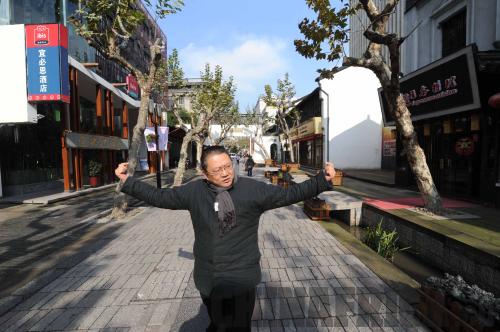|
 |
|
Wang Shu |
Foreign architects may be invited to head the design teams of landmark buildings in China such as the new CCTV tower and the National Center for the Performing Arts, but many talented Chinese architects are making big waves on the world stage.
Their efforts have been proven fruitful. Wang Shu, a 49-year-old Chinese architect, won the 2012 Pritzker Architecture Prize - which is often referred to as the Nobel Prize of architecture - on February 28. He is the first Chinese citizen to win this award.
Big success
The Pritzker Architecture Prize, founded in 1979, is an annual award given to the architect whose constructed work demonstrates a combination of talent, vision and commitment. The laureates receive a $100,000 grant and a bronze medallion.
Before Wang's international recognition, many people thought most buildings with brilliant designs were completed by foreign companies and the Chinese people were only responsible for the construction work. Today, Wang's success proves the capability of innovative design of Chinese architects and the high qualities of their works, said John Puttick, lead architect of the Beijing Office of Make Architects, a U.K.-based architectural design firm.
Actually, for Wang, winning the prize was not surprising. He won the Gold Medal from the French Academy of Architecture in 2011. It was the first time for a Chinese architect to win an international award in architecture. And he was offered the Kenzo Tange Chair at the Harvard Graduate School of Design for 2011-12. Generally, for a person who has received these two honors, the Pritzker Architecture Prize is within reach.
"The fact that an architect from China was selected by the jury represents a significant step in acknowledging the role that China could play in the development of architectural ideals," said Thomas Pritzker, Chairman of The Hyatt Foundation, which sponsors the prize.
Living tradition
Wang serves as head of the Architecture Department at the China Academy of Art (CAA). His office is located at the Xiangshan campus of the university in Hangzhou, capital of east China's Zhejiang Province. The campus, with an astonishing group of buildings in both number and scale, is just one of his masterpieces. Many buildings on the campus were his original creations. It was this campus that established his significant status in Chinese architecture.
The unique style of the campus makes a sharp contrast with most Chinese universities. Compared with buildings which imitate ancient architectures, it bears strong modern charm. Many visitors were stunned by the complex architectural space and abundant building types. The curves of the buildings match perfectly with the rise and fall of hills, forming a unique landscape.
Wang collected more than 7 million abandoned bricks of different ages. He asked the workers to use traditional craftsmanship to make the bricks into walls, roofs, window eaves and corridors. This creation attracted a lot of attention thanks to its blend of modern and traditional Chinese elements.
In addition, through use of recycled resources, Wang conveyed to the world the significance of cherishing resources and respecting traditions and history.
"Saving materials is a virtue. Today, many ancient and old buildings have been removed, so there are a large number of used bricks and tiles. These materials, which originally stood with dignity, are now abandoned as garbage. As an architect, I can't turn a blind eye to them," said Wang.
|